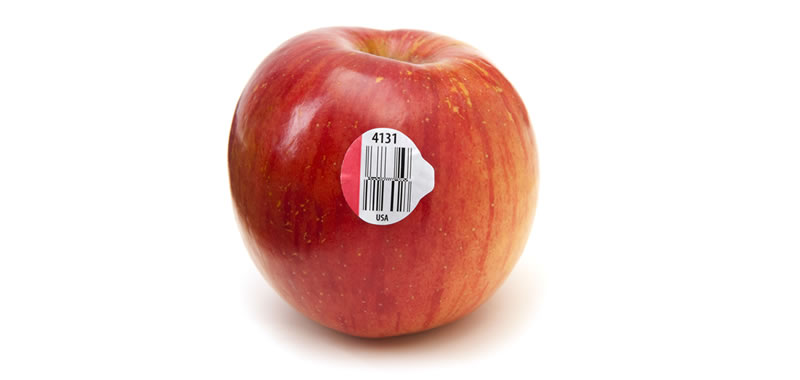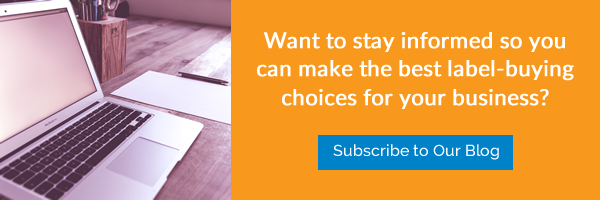
The right label not only looks great, but stands up well to its environment. The wrong label, however, can fall off, crack, crumble, or lose color. And if any of these things happen, it can be a problem for your brand. As much as companies like to believe that the only thing that buyers care about is the quality of their products, what’s on the outside has a major effect on whether consumers even bother to look within.
Several studies have shown that the way a product looks can trigger intense feelings in people. Appearances play a key role in our decisions to grab products off the shelf or pass them by. Even after we buy, labels and packaging shape our perceptions. Just ask Coca-Cola about its short-lived “white can” debacle.
Labels aren’t just attractive adornments, either. They impart critical information: ingredients, safety warnings, directions for use, and, of course, the identity of your brand. This last point — your brand identity — is important. Whether you’re selling beer, hot sauce, or candy, you want your customers to know exactly who to thank when they’re enjoying your product. It’s what keeps them coming back for more.
Knowing the importance of a label, it’s equally important to know what can happen when a label doesn’t hold up.
In the Wine Spectator, a top-rated lifestyle magazine about wine and wine culture, one collector laments that despite storing his expensive wine bottles in ideal conditions, the labels on the bottles were wrinkling and peeling. Because he planned to sell some of them, he was worried the unattractive labels would affect the value of his bottles. You can be sure that, had the vintners known, they would be very concerned about how their poor choice of labels threatened to harm the prestige of their fine wines.
The lifespan of a label depends heavily on each of the following factors. The next time you buy labels, make sure your label printer has taken these into account. If they haven’t, it might be time to find a new printer.
1. The Application Surface
If you’ve ever tried to tape a sign to a brick wall, you know that not every adhesive sticks to every surface.
Glass, plastic, cardboard, paper, metal, and wood all have different properties. Cardboard and paper, for example, are composed of tiny fibers adhesives can grab onto. Glass presents a smooth face. Label adhesives will react differently to each surface type.
To add an extra layer of complexity, there are further variations within each of these categories. For example, what adheres perfectly to one type of plastic may slide right off another type.
When you buy labels, make sure your printer asks you specifics about the application surface and whether it has been treated with any kind of paint or coating. Details make a difference.
2. The Label Material
On the other side of the adhesive is the material of the label itself.
Resist the urge to choose a label material entirely on aesthetic grounds. A paper label may give off a classy, handmade vibe that perfectly matches the brand of an upscale craft beer … but that “perfect” label may not survive when the beer bottle is submerged in an icy cooler. In this case, there are specific materials designed to tolerate the dunk better than others.
Again here, your label printer should be able to advise you on label material according to how your product is used and what you need your label to achieve.
3. Light and Heat
Materials, ink, and adhesives all can suffer by exposure to light and heat. Colors can fade, bonds can weaken, and surfaces can warp.
But you don’t have to hope your customers store your products in tomb-like closets. Your label printer can use fade-resistant inks, for example, or materials and adhesives that hold up in the heat.
It all comes back to the environment in which your product typically finds itself. A good label printer will help you understand the complex interactions between your product, its label, and the surroundings.
4. Moisture
Remember the story above about the peeling wine labels? Odds are, dampness in the wine cellar loosened the adhesive bonds between the labels and the glass bottles.
If your label will be used outdoors, it needs to stand up to rain, snow, and whatever else the elements can throw at it.
Moisture is a frequent foe of labels, but it can be resisted with the right materials and adhesives. Ask your label printer for advice.
5. Chemicals or Solvents
Think about a label on industrial equipment or medical instruments. These labels serve essential safety functions and must withstand frequent cleaning or sterilization with harsh chemicals and extreme temperatures.
Your label printer should ask you whether your label will be exposed to chemicals or solvents, to help you choose the right materials for a hardy, long-lasting label.
6. Handling
Most of us don’t gingerly handle the products we purchase, carefully keeping our greasy fingers from smearing or scuffing the labels.
As you choose your labels, a good printer will consider more than the product’s pristine state. They also will think about things like whether the image will smudge as people handle the product or whether the materials will rip and crinkle when the item is shoved in a backpack. To a buyer, a cheap-feeling label could suggest that the product is low-quality.
That’s why it’s a good idea to have a conversation with your printer about how you want your label to perform in the hands of your customers.
Learn How to Buy Labels With Confidence
By now, you may be realizing that the task of printing labels is both more complicated and more crucial than you many people think. It’s easy to keep informed and up-to-date, though. Just subscribe to our blog, and get weekly inside-view content that helps you be a more savvy label buyer.

